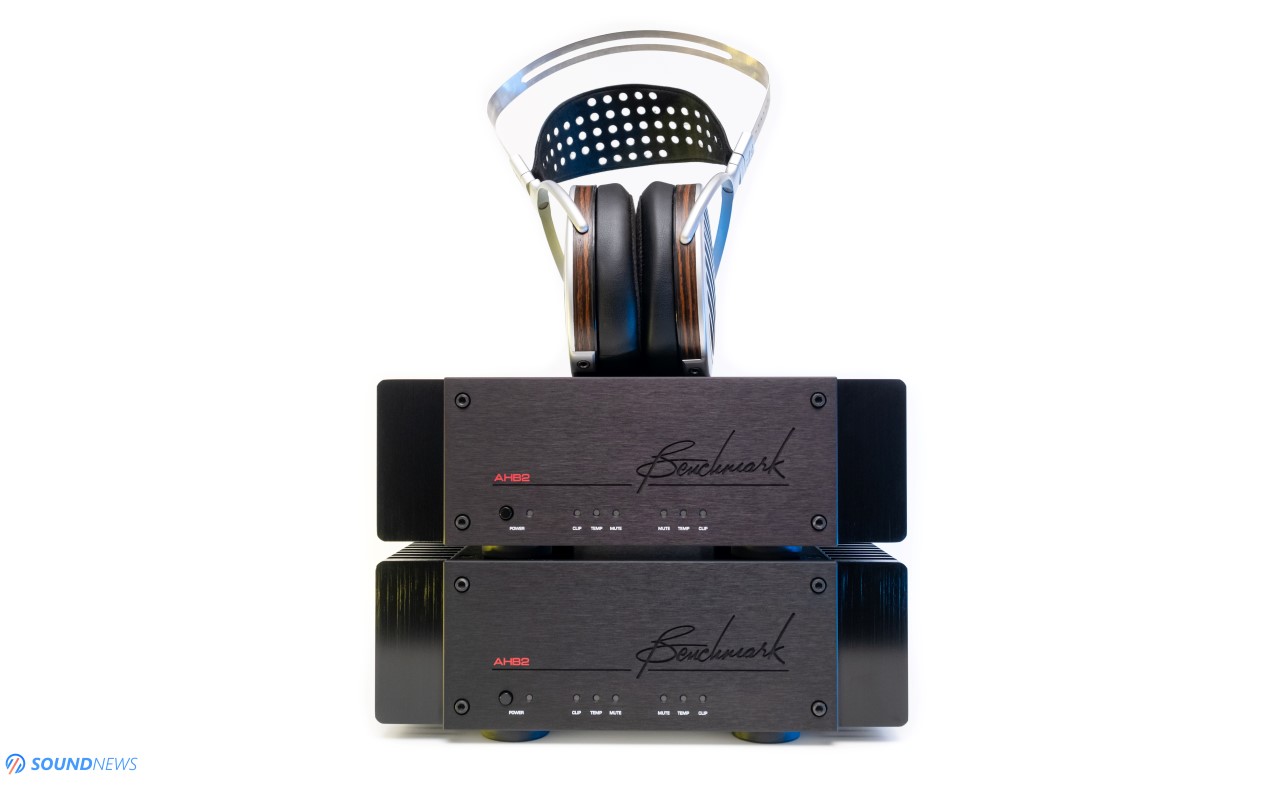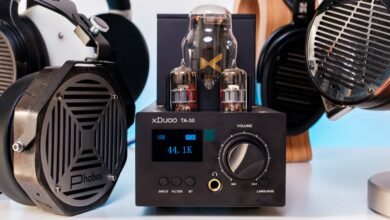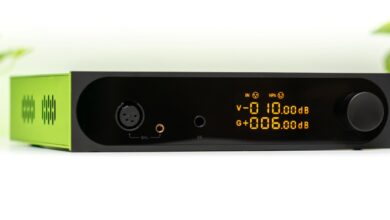Benchmark AHB2 Review – Transparency, Speed and Resolution at their Best
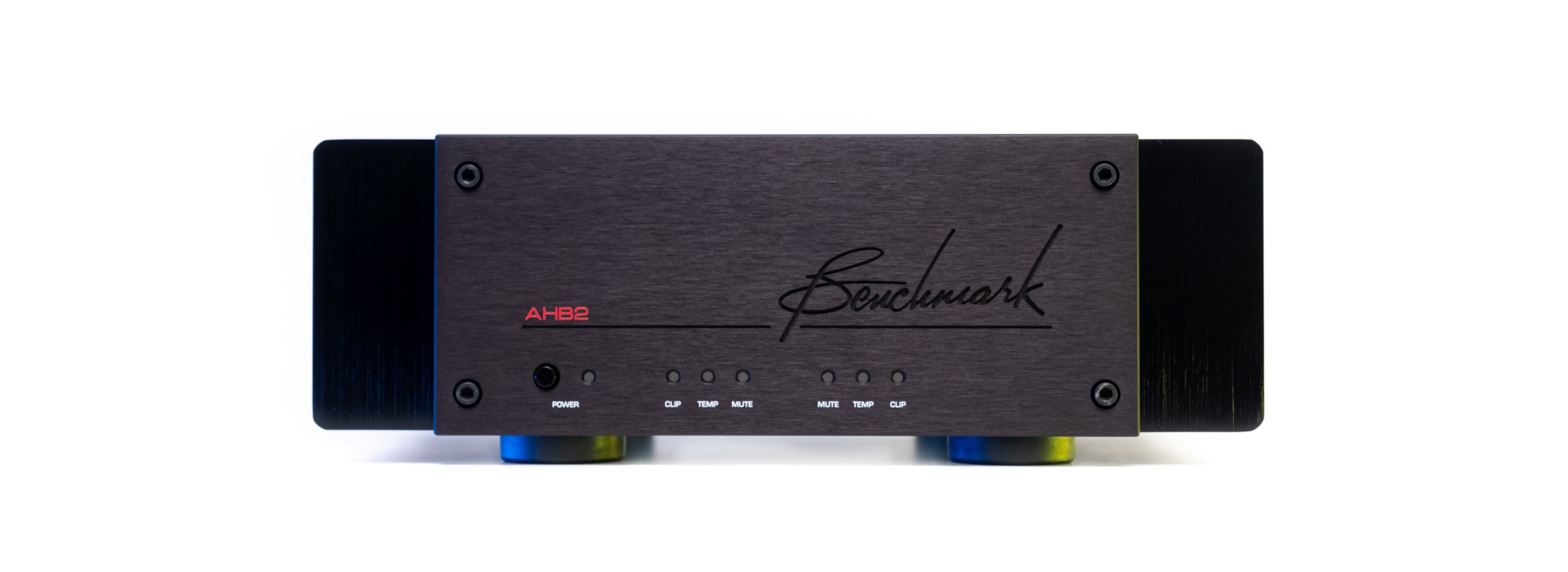
My Video Review:
Benchmark Media doesn’t need an introduction whatsoever, as their name implies – they’re committed to excellence. Besides bestowing world-class specifications, everything they make is backed-up by measurements produced by the world’s best audio analyzers. Luckily, Benchmark’s crew isn’t formed only by nerdy engineers, as you’ll find musicians, audiophiles and audio professionals throughout their ranks that don’t care only for the numbers (measurements), but for the end result as well, as no matter how good or bad a component is looking on a screen, the final verdict is still delivered by our hearing apparatuses. Besides being passionate for all things audio, they’re also serious about durability and build quality of their products. I had at my disposal three Benchmark products and years later, they still looked as good as when I’ve received them. When you see the Benchmark logo on an audio component, you can be sure that it was designed to be acoustically transparent and as neutral as possible, without inducing coloration or deviations from linearity. This strong philosophy behind their products is surely not for everybody…but if you care for honesty and absolute transparency, then all Benchmarks products will be providing you exactly that.
I was given the privilege of reviewing the world-class Benchmark HPA4 preamp and headphone amp some time ago, that in time became my daily driver work horse. You can see it everywhere around here, it was put in at least ~40 reviews as all my headphones, DACs and power amp reviews were made with its help. Immediately after placing it in my headphone setup, all other amps felt muddy, raw, unpolished or slow sounding. It grown on me with its clean and ultra-revealing nature and although HPA4 isn’t a heavy lifter and wouldn’t drive the hardest loads out there (as Hifiman’s Susvara), it moved away from my music to a point of becoming invisible, letting my DACs shine and my headphones reveal their true identities. It was both technical & linear sounding…and between you and me, this is exactly what I’m searching with all amplifiers that are passing though my hands: a metal box that will preserve the soul of the music, without adding or subtracting anything from there. My closest friends already know my insatiable obsession with transparency, as when I’m closing my eyes, a hunting game will undergo, where I would prey on the smallest nuances, on feet movements in the auditorium, on thin layers of air passing by or on nasty mastering errors. I’m holding transparency above brute force and sheer muscles. Give me a low power, but pure sounding unit anytime of the day in detriment of a monster amp that would add fog and noise in my setup.
A year and a half later, I was kindly asked if I’d want to review their AHB2 that follows the same path paved by the HPA4, but instead on punching headphones, it was made to drive and control passive loudspeakers with an iron fist. How could I say ‘no’ to their best shot at high-end audio that challenges the best performing power amps ever made? AHB2 might look small and lightweight, but thanks to its clever engineering and power supply implementation, this little fellow could still deliver 190 Watts in 4 Ohms and 100 Watts in 8 Ohms, while maintaining an undetectable noise floor and distortion. For the craziest folks out there, you can even bridge two pieces together for ~580 Watts in 4 Ohms and 380W in 8 ohms. AHB2 wasn’t designed as another power amplifier to hit the market, but as a statement and no-compromise power amp from multiple points of view. At a price point of €2999 / $2999 it will be exchanging punches with upper echelon amplifiers, but does it worth its asking price? You’ll need to read until the end to find that out. There’s some interesting stuff happening on the inside which I’ll mention in a minute and until that happens, let’s assess it in a very customary (read: in-depth) way.

Unboxing & Package Contents
A box in a box is exactly how AHB2 arrived at my front door, a usual sight that should well protect the unit during shipping. As HPA4 that came before it, AHB2 is protected by a thick spongy roll-cage, so it doesn’t matter if Ace Ventura or another crazy courier will be dropping it off, it will still arrive safe and sound to your front door. There’s a heavy-duty locking type power cable in there and a 12V trigger cable – just in case you already own several Benchmark devices and you want to control them with a single remote. After seeing a 42-page Instruction Manual for a power amplifier that literally has a single button on its front plate, I realized how serious Benchmark Media is about their products. I recommend checking it out, as it will teach you a few tricks, as bridging together two units for unlimited power and control.
You can get the AHB2 in a matte-black anodized aluminum case, you can go with a silver face-plate and you can also choose the regular or the rack mounted version.
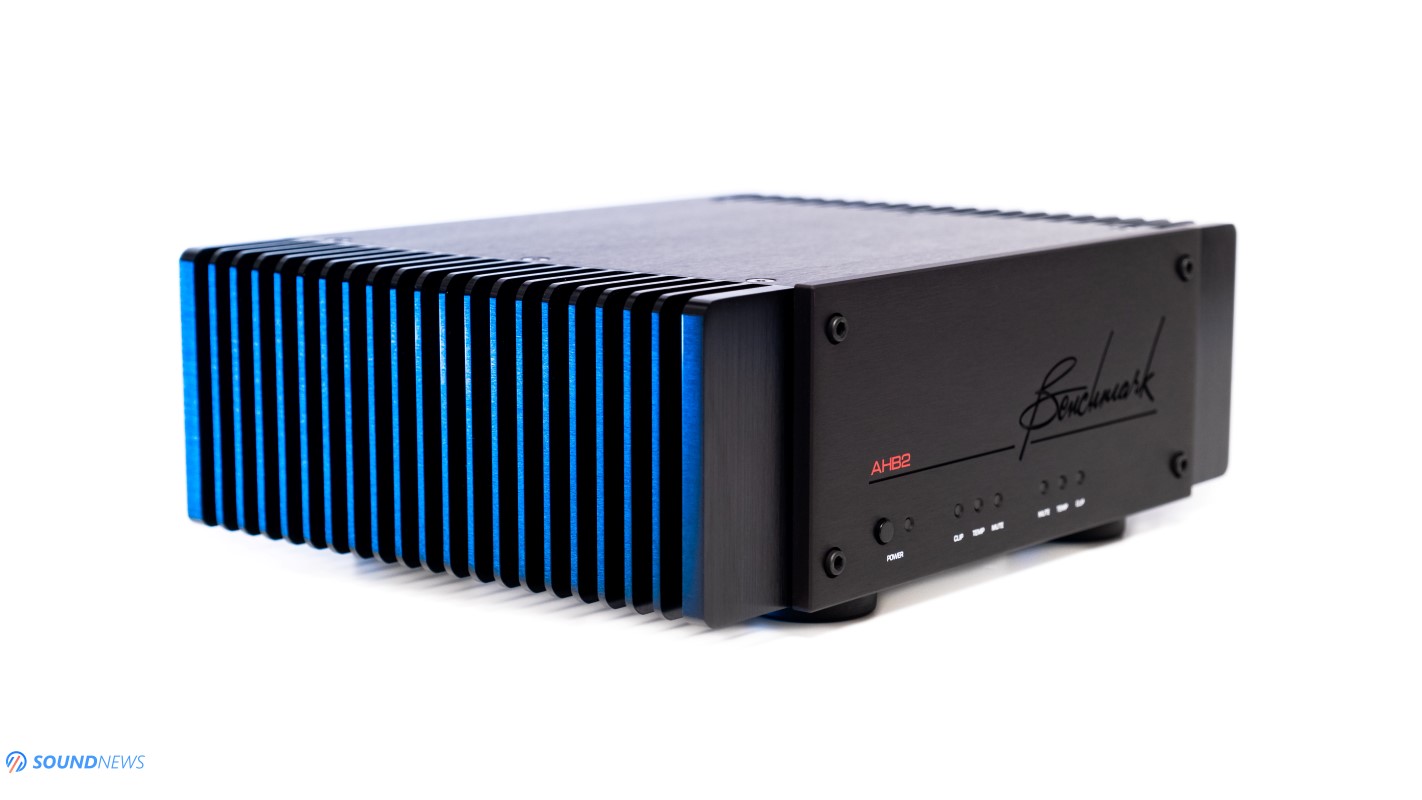
Design & Build Quality
Thor almighty! This thing has some amazingly thick panels all around it, adding a level of confidence and refinement. It looks plain and industrial, but I really dig its minimalist body. You won’t find cheap punched steel cases on Benchmark products; I really dislike those in high-end audio. AHB2 looks like a proper power amp crafted from thick aluminum plates, it looks flawless to me down to the smallest details. Every unit is designed, assembled and tested individually, undergoing a strict evaluation process both in terms of looks and performance. Everything was perfectly aligned, metal plates seem polished enough, e-coated with a gorgeous matte black paint and I find them smooth enough to be used near Hi-Fi equipment.
Thanks to its massive heat-dissipation fins, AHB2 runs very cool when idle and it remains as cool under most load conditions. It can get a little warmer under harder loads, but it was never hot under any circumstances.
The amp has a small foot-print, it’s smaller than KECES S300 and S125 units and much smaller than my former Kinki Studio EX-M7, Hegel H190 and Cambridge Audio Azur 851A. Being so small and compact, you can easily integrate it into tiny racks and petite Hi-Fi systems. You can clearly see that an IKEA BESTA TV bench supports two AHB2 units on a single shelf. All in all, AHB2 looks like a huge space saver, something I can’t say about my former amplifiers.
The CNC milled front panel houses just a single On/Off button and several low-intensity LEDs will be showing its working status and everything about its fault protection circuits. Underneath it four massive rubber feet can be spotted; those will surely absorb unwanted micro-vibrations.
Like all other components made by Benchmark, AHB2 has an impeccable build quality top to bottom and there is no other way to describe this unit. It reminds me about the small and agile Sherman tank, as it’s small enough, but offers a serious punch once music starts playing.

Controls & Connectivity
Being a power amplifier only, you won’t find remotes and volume controls with this one, there’s only a single On/Off button and several LEDs will be showing if it reached an over temperature, over-current, or clipping status and everything else is located on its back. There you’ll find your left and right speaker terminals, an AC socket in the middle, a pair of balanced XLR inputs and three NL4 speaker outputs (also called as SpeakON terminals) – that are mostly used in the Pro Audio world. This is a balanced only amplifier, so you won’t find single ended RCA inputs. A switch lets you choose its sensitivity depending on how powerful is your source. You can select between 2, 4 or 9.8 V inputs and another switch lets you choose its stereo or mono (bridged) operation. For mono mode, you will need two AHB2 power amplifiers.
Benchmark added two 12V triggers, just in case you’ll add another AHB2 and one of their DACs, controlling everything with just a single remote.

Technology inside AHB2
You know what I like the most about it? Its bullet-proof protection systems! Yes, systems, as there are several of them in place that will save your precious speakers and the amp itself from any harm. Just look how many guardians are protecting its electronics:
- Temperature protection on each output channel
- Temperature protection on its main power supply
- Over-current protection on each output channel
- Over-voltage protection on each output channel
- DC offset detector on each output channel
- SOA (Safe Operating Area) detector on each output channel
- Load sensor on main power supply
- Fault sensors on all power supplies
- AC line under-voltage fault sensor on AC input
Impressive, isn’t it? Its protection systems will monitor its output voltage, output current, output distortion, output device SOA (safe operating area), power supply current, power supply voltage, AC line voltage, case temperatures and power device temperatures. Fault conditions silently mute both output channels in order to protect the speakers and amplifier from any damage. A status display shows the exact cause of the fault and the issues can be remedied in no time.
Benchmark is describing it as the quietest and cleanest audio amplifier on the planet. Some very powerful words right there, but considering its measured performance, AHB2 is still unrivaled by any other power amp when it comes to THD, Noise and dynamic range. I mean just look at those numbers. Show me another power amplifier than can deliver a measured dynamic range of 132 dB in stereo mode and 135 dB in mono mode and a total harmonic distortion of 0.00013% at Full Power. Crosstalk is better than -115 dB at 1kHz and obviously there is no crosstalk with two units in bridged mode. Its continuous output power is 100W in 8 Ohms, 190W in 4 Ohms and if you’ll add another one, brace yourself as 380W in 8 Ohms and around ~580W in 4 Ohms are some very serious numbers considering their weight and dimensions.
Its high-power output, high damping factor, high peak current delivery and inaudible distortion was possible thanks to a different approach to traditional amplifiers. AHB2 uses THX-AAA feed-forward error-correction technology that eliminates most sources of distortion. An unconventional power supply maintains tight regulation and low ripple while minimizing magnetic fields. A low-gain topology optimizes the gain staging between the D/A converter and the power amplifier while minimizing noise. Sophisticated shielding and star-quad signal distribution provide outstanding immunity to interference. A unique output stage incorporates class-H tracking power supply rails to improve efficiency. The result is a cool-running AHB2 that has a signal to noise ratio of 132 dB, while distortion is at or below the measurement limits of the finest audio analyzers.
Its output stage is based on bipolar transistors biased into Class-AB operation that delivers high output current and low noise and the THX-AAA input stage will be providing accurate cancellation of errors, exceeding the performance of the best Class-A amplifiers.
Most high-quality power amplifiers have linear power supplies, large toroidal transformers and large banks of energy-storage capacitors. These linear supplies are sometimes unregulated and the capacitors help to remove ripple produced by the AC line. In contrast, AHB2 uses a tightly regulated resonant switching mode power supply that includes a very fast control loop. This control loop responds to audio-frequency load changes and keeps the supply voltage constant without the use of a large bank of capacitors. This active regulation is considerably more effective than capacitive energy-storage. Consequently, the peak power output of the AHB2 does not vary with line voltage or audio loading. The power supply rails maintain a constant voltage during audio peaks.
I can go on and on about everything that makes it so radically different and fresh from a sea of copy-paste amplifiers, so I’ll just stop here, but if you want to learn more about it, I strongly recommend checking out this page.
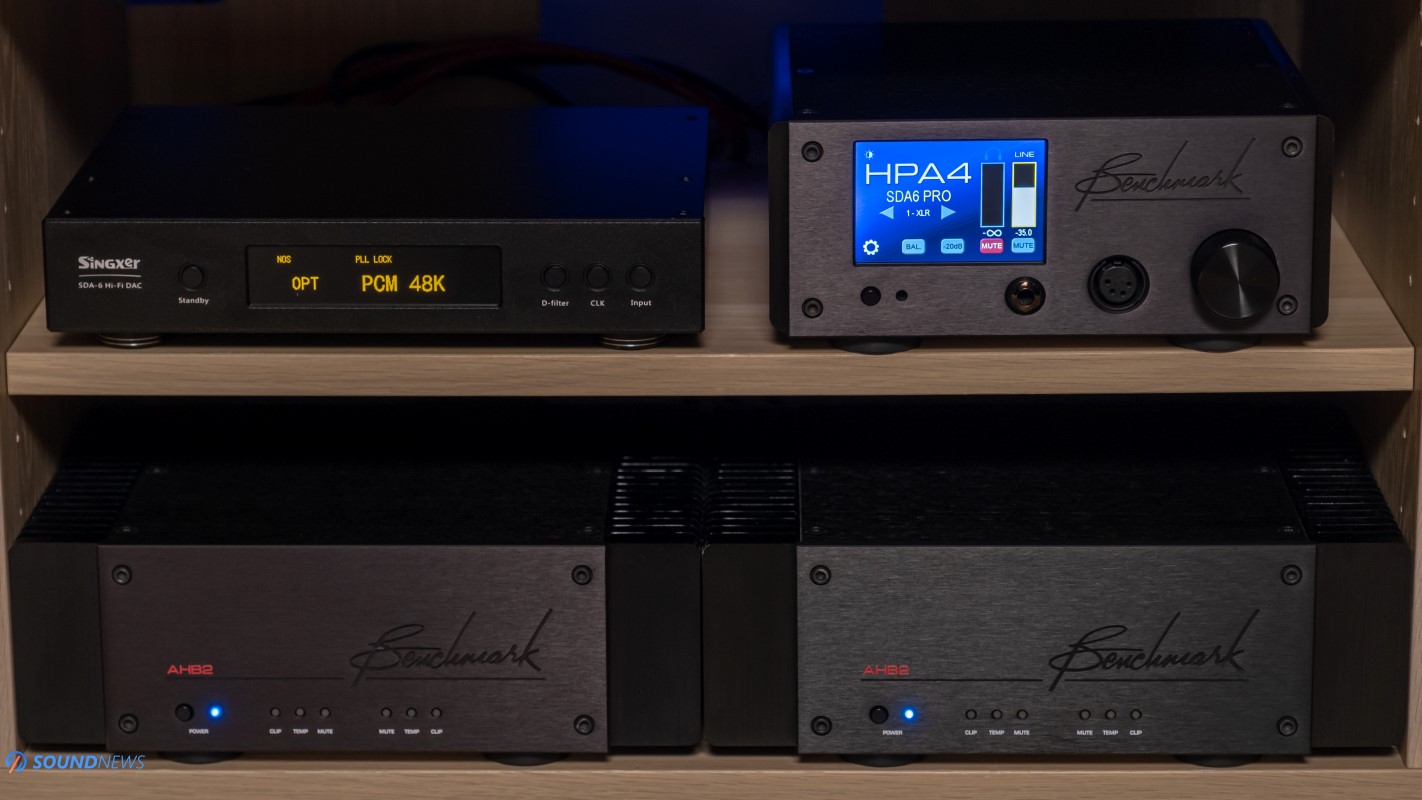
Test Equipment
AHB2 was used in a stereo setup and also in a headphone-based setup and yes, you’ve read that right! It was used mostly with a Gold Note DS-10 PLUS + PSU-10 Evo DAC, PRE and streamer, sometimes with a Matrix Audio Element X and sometimes with an Audiobyte HydraVox + HydraZap stack, followed by the Benchmark HPA4 and then by two AHB2.
I wanted to squeeze the last drop of performance out of it and that’s why I’ve used three different loudspeakers: my daily driver KEF Reference 3 ($14.000), Natural Sound NS-17 ($2300) and Sound Of Eden Crescendo UNO (€2200) bookshelf loudspeakers.
AHB2 were also used in a headphone setup, directly driving a pair of Hifiman Susvara, which I already discussed in detail in my Hifiman Susvara review. Okay everyone, enough with the talk, let’s hit some eardrums!
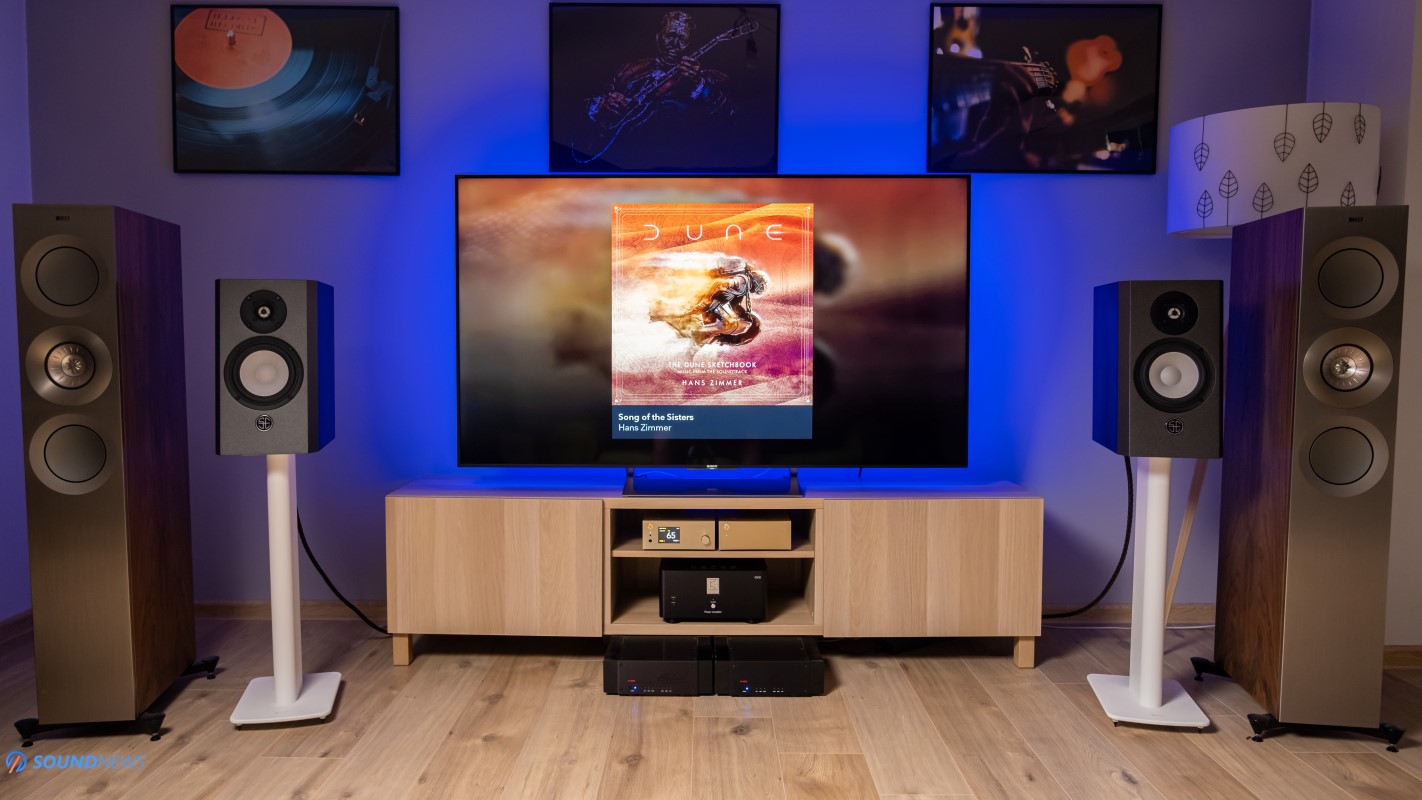
Sound Performance
I. Preliminary Impressions
Before moving on to my actual impressions, I need to reiterate how important is having multiple protection systems in place. As you well know, I’m switching digital sources on a weekly basis, as there are so many DAC reviews around here. Some of them offer preamp functionalities, while others don’t, like most R-2R DACs and the latest Singxer SDA-6 PRO that was reviewed last week offered just a fixed voltage output.
I’ve replaced the excellent Gold Note DS-10 Plus & PSU-10 Evo stack with the SDA-6 PRO and I somehow forgot that the later doesn’t have a volume control, blasting 380Watts of power into my KEF Reference 3 after pressing the play button. A microsecond didn’t pass and both AHB2 engaged their protection circuits and muted themselves without causing any harm to my loudspeakers. For almost a year now, AHB2 saved my speakers twice and that thought alone makes me happy and confident, as no matter how clumsy I am, AHB2 would still save the day for me. I didn’t see as many protection systems on other power amps before and those are some of the reasons AHB2 can be seen in all my loudspeaker tests. Besides that, there are quite a few (older) DACs and preamps, that could deliver powerful pops when turned On or Off, due to an electrostatic discharge, but thanks to AHB2’s slow start and turn-off, I never heard those pops and crackles anymore, adding an additional layer of protection for my Hi-Fi setup.
If you’re wondering why the heck I’m using two AHB2 and not just a single unit, the answer is a simple one. You can see six LEDs on its front panel, out of which two are showing the clipping status when it’s running out of breath, go a little louder and it will shut down. It so happens that my Reference 3 aren’t that easy to drive. At low to moderate volume levels, a single AHB2 has no problem driving them, but when some wild electronica tunes are playing at higher volumes, the clip LEDs will start blinking. That happened quite often and obviously not only with electronica, but with any other tune that had a higher dynamic range. A secondary AHB2 quadrupled power output and completely removed channel crosstalk, so I’m no longer clipping my speakers, dynamics are even more impactful and the left to right soundstage increased to a certain degree as well.
Describing the sound of AHB2 is no easy task, as often times it feels like I’m listening to my digital source and speakers. If there’s a power amp that tries to disappear from your acoustic chain, without altering the purity of the signal, then AHB2 is surely that amplifier. Before it/them, I had tens of integrated and power amplifiers, I was swapping them on a monthly basis, as none of them were passing my tests with flying colors. One of the cleanest sounding power amps that remained at my place considerably longer was the KECES S300, as up to that point it felt as the cleanest fully-discrete class – A / AB amplifier, closely followed by the Kinki Studio’s EX-M7.
When AHB2 replaced the S300, there were several immediate changes that jumped at me and those were absurd amounts of details coming forward that I didn’t encounter before, the speed and subsequently the impact of the sound drastically improved as well. The whole transient response jumped to a higher level altogether. Reference 3’s piston firing aluminum drivers are already known to be extremely fast and revealing sounding, but AHB2 added an iron grip, better controlling their attack and decay. I don’t recall my speakers sounding so tight and controlled when dynamics were reaching their peaks, delivering not only a much clearer bass output, but a higher quantity as well. The key words with AHB2 are: world-class detail retrieval, absolute transparency, lightning-fast transient response, an open wide soundstage with a very precise layering and positioning of the notes around the listener, all tightly controlled with an iron grip, never sounding too mellow, sluggish or all over the place. The only thing that might be to your liking…or not is its overall character, because AHB2 doesn’t have one. This is a very linear / neutral and extremely honest sounding amplifier, I don’t find it lush, mellow, or warm sounding, but if your source and speakers are sounding like that, then sure enough, it will pass over those traits and sound exactly like that. AHB2 can’t improve an already cold or bright sounding setup, it can’t beautify and sugar coat your music in any way, but still…I think it sounds by a hair more natural to their HPA4 preamp/headphone amplifier.
You see, HPA4 is using only THX-AAA feed-forward error correction tech and while AHB2 uses the same circuits at its input stage, its output stage uses discrete bipolar transistors biased into Class-AB operation, adding just a glimpse of naturalness and organic matter all over my music. I’ve tried only a handful of entry to mid-level Class-D amplifiers by now, mostly from SMSL and Topping and AHB2 easily outperformed them in terms of tonality/timbre. While previously mentioned class-D amplifiers sounded dead-flat to almost soulless, AHB2 wasn’t doing it at all, as I found it mighty engaging, hard hitting down low, natural sounding in the midrange and never fatiguing with hard trebles.
I remember the day when the secondary AHB2 came in, it had already a month of burn-in as I bought it from a close friend, I’ve engaged my usual playlist and somehow Hotel California (Live on MTV, 1994) by Eagles (Qobuz / Tidal) started playing. The first two drum hits at the 51 second mark kicked my chest so hard to my previous amps, that I literally jumped from my sofa in complete awe and confusion. A single AHB2 wasn’t doing that, hell not even EX-M7 or my daily driver S300 wasn’t doing that and mind you, the last two units were extremely potent when it comes to landing precise hits and delivering higher dynamics. With all that said, only with two AHB2s my speakers reached the absolute highest and lowest dynamic peaks. There was more information coming from their drivers and more importantly, there was a higher gap between the lowest and highest intensity notes. It felt like I was watching a 4K High-Dynamic-Range movie for the first time, burning my eyes with bright colors, high contrast, high brightness and showing me the true beauty of those pictures. AHB2 was exactly like that, I can say with certainly that I’m dealing with a dynamic range behemoth, delivering an instant amplitude to my loudspeakers. If you’re into fast and impactful tunes and if you dig all sorts of modern music, then prepare putting your jaw back in place, thanks to its impeccable transients and control of the diaphragms.
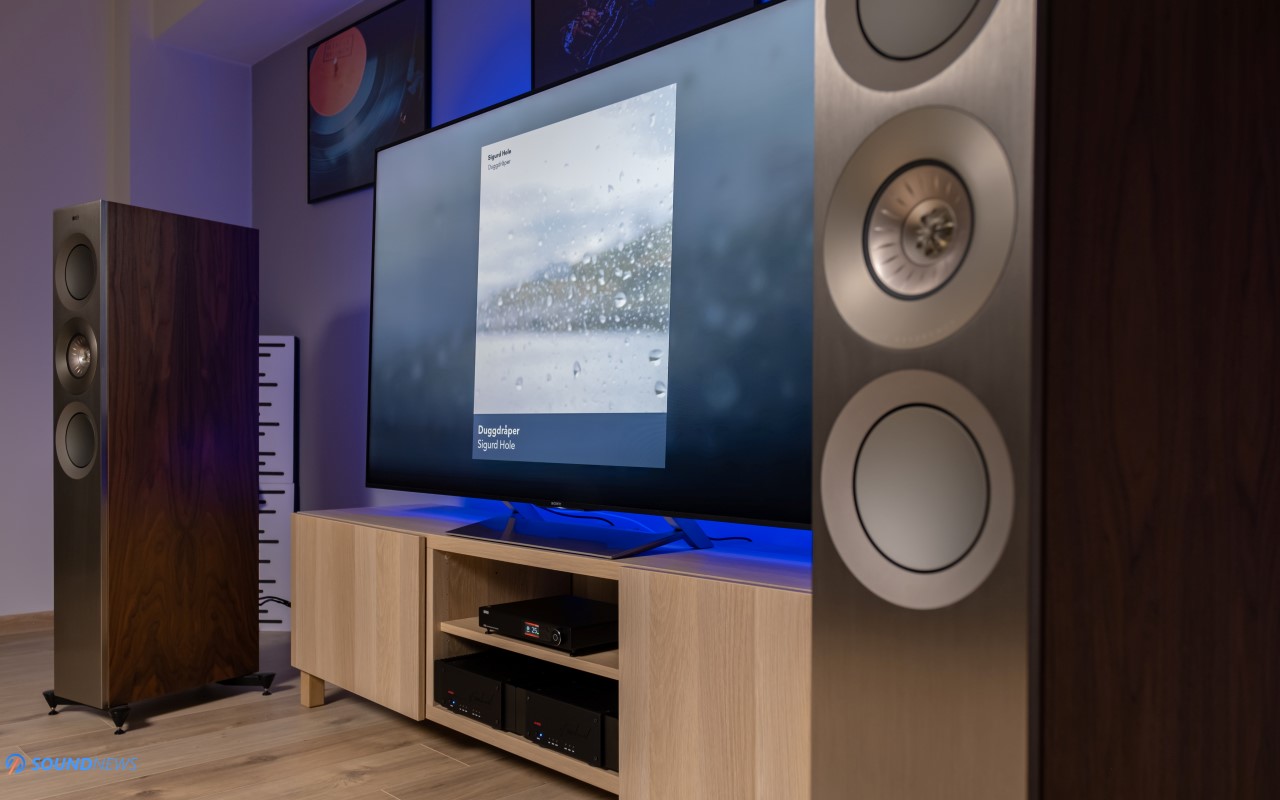
II. Noise Floor
I’m putting this chapter in all my integrated and power amplifier reviews, simply because some units are noisier than others and only a handful delivered a noiseless performance at both low and high volumes. The latest amplifier releases are already putting a higher accent on measurements such as THD+Noise, so you can get some decently clean sounding amps even below $1000 without too much trouble. Get a vintage amplifier and you might get some surprises as transformer hum, hisses or plain pops and crackles.
As I’ve explained before, AHB2 uses an advanced feed-forward error correction tech – a noise shaping technique that was specifically designed to kill any type of noise, coming from your source, from your wall or from the amplifier itself. There are so many protection systems at play, that I will be surprised hearing noises, apart from the ones that are already in your records.
Even without comparing it to my former integrated and power amplifiers, it was clear to me that I’m dealing with Mr.Clean himself. AHB2 is fighting noise so ferociously and it’s so effective at it, that all you’ll hear is a pure musical signal, nothing less and nothing more. If there is a definition of a dead-silent amplifier that will deliver you the blackest background, then AHB2 is surely that amplifier as no matter how hard you’ll try, you can’t beat it in here, a flawless victory indeed. There aren’t noises whatsoever at any volume levels and that shouldn’t come as a surprise considering everything that makes it tick. When noise goes out of the way and distortion is no longer an issue, everything that remains is your unspoiled music, shown in its full glory. With it, I know that I’m squeezing the last drop of performance, delivering the cleanest possible signal to my loudspeakers. When doing DAC or preamp reviews, that’s no longer a difficult task with AHB2 at my side, as everything grows obvious and I no longer need to stress myself. This is not only a very good amp at making music, but also an invaluable tool when assessing new gear.
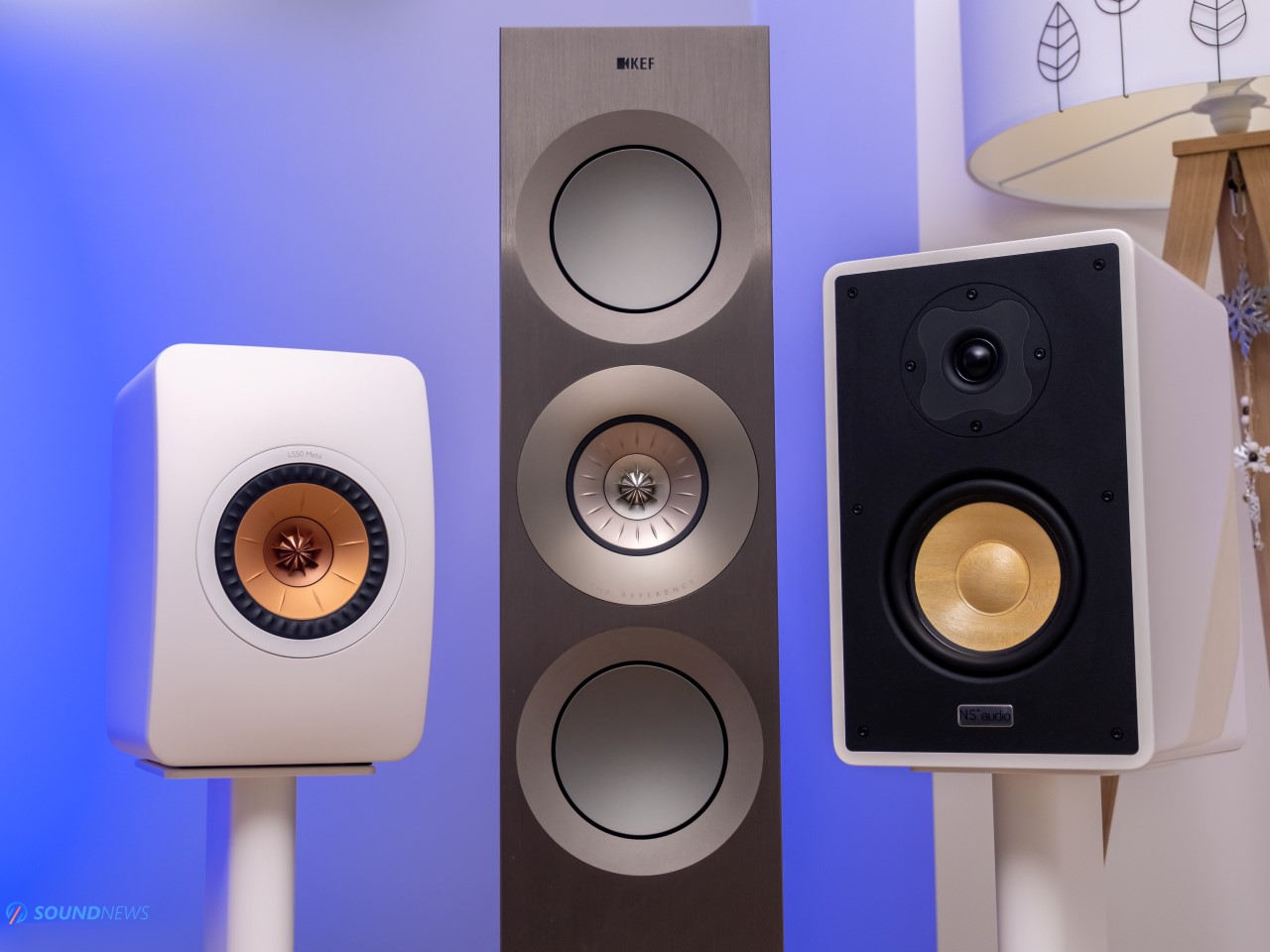
III. Transient Response
It seems that there’s a strong correlation between power output, your speaker’s sensitivity and transient response, as I never felt my Reference 3 as energized and impactful sounding before. For me, this part is extremely important, as my blood will start boiling only when fast transients are passing through my body. Slow and mellow music still takes a big portion of my audiophile diet, but when my mood levels are low, nothing wakes me up and puts a huge smile on my face when I start tapping my feet and move to the rhythm of the music.
I already experienced plenty of amplifiers that refused to press the brakes, always trying to impress with their speed, slam and control of the diaphragms, but I feel that AHB2 beats them and that’s another reason I bought the AHB2s in the first place. AHB2 aren’t joking around with modern music, prepare your body and especially your chest, as a massage session will undergo once music starts playing. These units dialed-up the speed and the impact into my chest to eleven and from plenty of integrated and power amplifiers that passed thought, I’m crowning the AHB2 as one of the fastest, impactful and tightest sounding. The name of the game is a tight control over the drivers, thanks to a lightning-fast current delivery.
The same traits carried over to Sound Of Eden Crescendo UNO and to the Natural Sound NS17. The later ones are using wooden diaphragms that could press the brakes and deliver a mellow and smoothed out presentation with the wrong amplifier, but not on AHB2’s watch. I can go on and on about how impressive AHB2s were in here, as simply put, I’ve experienced the best driver control, the nicest impact and so far, the highest mood lifting performance. There were several people that came in for a listen and we all agreed that AHB2 were incredibly snappy and fast sounding.
One of the nicest tracks in testing the transients is Chocolate Chip Trip by Tool (Qobuz / Tidal), for its exquisite dynamic range, quick shifts from down-tempo to up-tempo and vice-versa, especially towards the end where a powerful drum solo starts kicking in at the 2 minute and 20 second mark. Before playing this track, I moved my sofa about one meter and a half away from the usual spot, as I already knew what was going to follow. This track delivered punchy dynamics on many occasions with many amplifiers, but the way AHB2 handled all those beats…was on another, much higher level. If you watched Whiplash, think about a similar experience, but considerably more intense, harder slamming, with almighty whirls, synth burbles intended to pull you under. There’s something primordial about this track and yet it’s so fresh and oh so alive every single time. This track is an outstanding transient checker, AHB2 delivered that in spades and only towards the end I could catch my breath and calm my spirits.
The same wild and toe-tapping experience was felt throughout a wide selection of music, as even jazz and blues could have a different meaning with this amplifier.
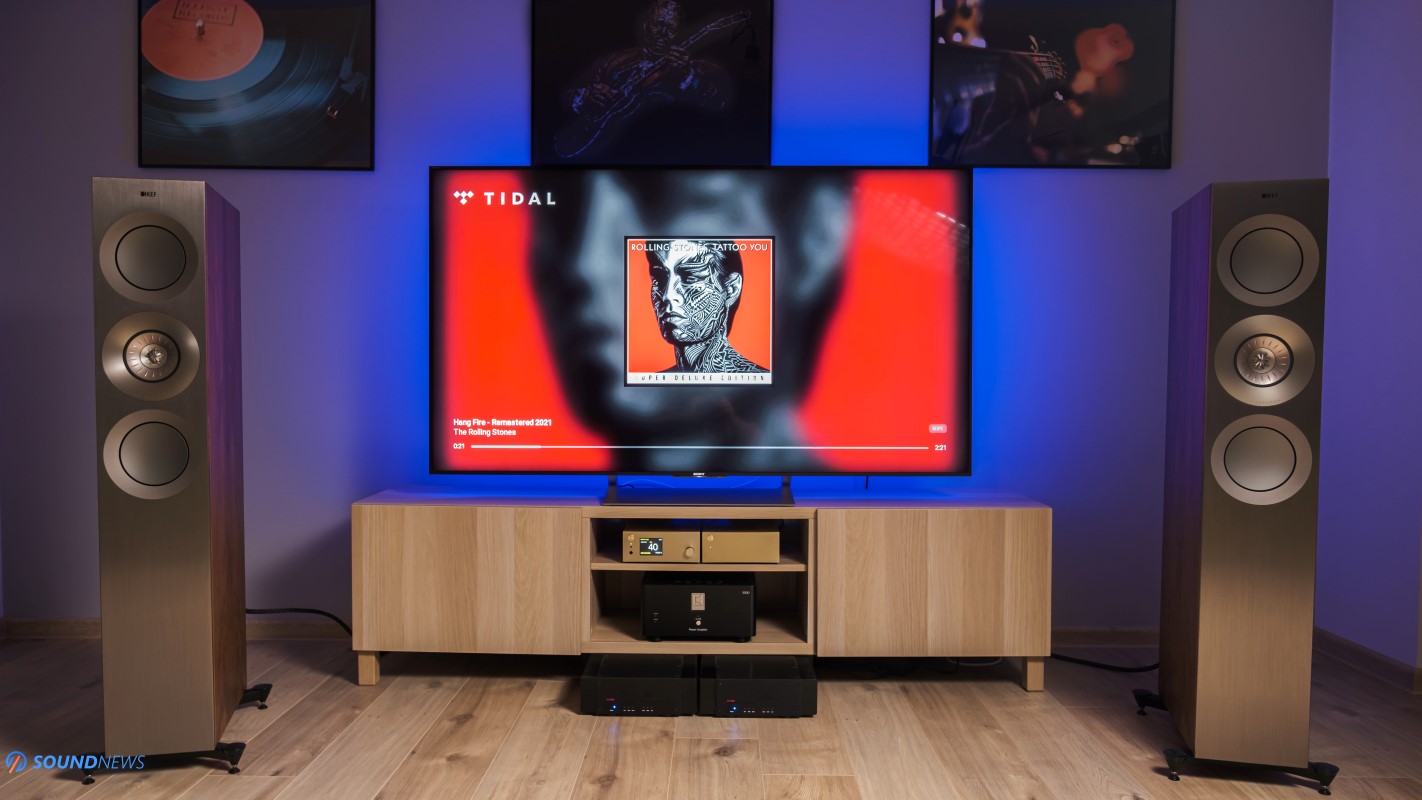
IV. Detail Retrieval & Transparency
This is another easy chapter to write about, as when noise and distortion are going out of the picture, everything that remains is a pure musical bliss that isn’t tainted or muddied in any way. Usually, analog amplifiers are the weakest links in the chain due to their (much) higher distortion numbers, but with AHB2, it’s the other way around, as you’ll be listening to the limits of your digital or analogue source. After having them for almost a year now, I can say that AHB2 were never limiting my DACs, speakers and even headphones. I’ve got a razor-sharp precision, like looking through a magnifying glass at my acoustic chain. AHB2 will immediately highlight the weakest link and I could easier detect subtle changes with new interconnect or power cables, when DACs were being swapped, or when I was using a weaker or a better preamp stage.
Lacking large toroidal transformers, huge banks of energy-storing capacitors and providing a direct path to its output stage, unlocked the ultimate frontier in terms of transparency and detail retrieval, as every time I powered them on, I could spot additional low-intensity notes playing tricks on me, that wouldn’t show up on other amplifiers.
With AHB2 at your side, you’ll be listening to the source material first, then to the digital or analog source itself and only then to your loudspeakers or headphones (via a special adapter cable). It doesn’t leave a stain on your music, it simply wants to disappear, without adding or subtracting anything from there. I’ve tried plenty of amplifiers by now and I have the highest respect for those that are not staying in the way of the signal’s purity. No matter the song that was being played, I knew that I will be hearing only the truth alone. If it’s not to your liking, blame the alcohol, blame your DAC or your loudspeakers, even your music if you want, but not the amplifier as it’s not there.
With a crazy signal-to-noise ratio of 135 dB in mono mode, good luck finding traces of noise in your tunes, as you will be listening to the limits of your chain and of your hearing abilities. Living with HPA4 for two years now, I’m not that easily impressed with transparent sounding devices, but luckily AHB2 is exactly like that, unearthing the smallest nuances like it’s a walk in the park. Transparency goes hand in hand with detail retrieval, it was a child’s play focusing on any note I wanted, be it in front of me or somewhere to my right or left. AHB2 is one hell of a transparent sounding amplifier, it lets you be the conductor, it lets you choose the focusing points and discard what’s less important. If you want to focus on the big picture and macro-dynamics, be my guest, lean back and relax, music will do its thing.

V. Soundstage & Depth
KEF’s Reference 3 will scale well with a potent amplifier, spreading their wings once you feed them lots of high-quality power. Reference 3 are by far, the pickiest loudspeakers I’ve had in a very long time, seriously outclassing the whims of Buchardt Audio’s S400, Natural Sound NS-17 or Sound of Eden Crescendo UNO. Previously mentioned entry to mid-level Class-D amplifiers weren’t working that well, with the exception of SMSL SA400 that offered tone controls and plenty of sound enhancements that could awake some midrange presence, while taming the upper treble. By far, the best amplifiers, that could portray an infinite stage in my room, while adding depth and meaning to my music were transistor-based class-AB or hybrid Class-A/AB amplifiers. AHB2 of course part of this deadly squad, always bringing forth a bad attitude and immaculate transients, whilst never limiting the scale of the music.
A single AHB2 was already providing an excellent imaging and pin-point location of the notes, but with two units, depth improved by a little and the left to right soundstage was bigger than ever before. Adding the HPA4 working as a preamplifier improved the leading edges, so I could feel them sharper and more defined anywhere in my listening room.
In my humble opinion, AHB2 wouldn’t provide the tallest or the deepest presentation, but it will still increase and decrease the stage size depending on the music that is being played. Class-D amps might be competing is terms of resolution, timing and decay, but they didn’t hold a candle when it comes to openness and sheer scale of the music. There’s a strong reason the amps that I’ve bought and still use on a daily basis are Class-AB amplifiers that might put a few Watts in Class-A for good measure. It was never a goal of mine going with such designs, but after long listening sessions…they just stuck in my mind and never went back.
There is an unwritten rule that well-designed amplifiers with over-engineered power supplies will never limit depth, imaging and scale. It seems that Benchmark Media did an amazing job with their Class-H power supplies that are pumping instantaneous power down low, pushing lots of air in the sub-bass, as I felt my room filled with music and subtleties. While 100 Watts in 8 Ohms and 190 Watts in 4 Ohms doesn’t seem like an over-powerful unit, it was more than enough with bookshelves and even with Reference 3 if I wasn’t going much louder, filling the living room with vibrant sounds that were hitting me from different angles, creating a believable 3D image around me.
When 500 Miles by Cliff Eberhardt (Qobuz / Tidal) started playing, it was so easy focusing on every guitar pluck and or the vibration of his voice. There was a massive void space in between all musical notes, bouncing them through the walls and filling the room with sounds and positive vibes. Layering was top-notch, leading edges were crystal clear and there was a great instrument separation, pin point location of the notes and mostly importantly – focus. I couldn’t ask for more.
Bottom line is that AHB2 would be adjusting to your tunes, to your loudspeakers and room acoustics. They can sound big, extended, separating the notes from each other with well-mastered music and vice versa, they can decrease the room size, pushing you closer to music, creating an intimate performance with some other tunes. I didn’t feel for a moment that AHB2 were limiting my speakers in any way, but at the same times all three aren’t exactly the most power-hungry speakers that I know.
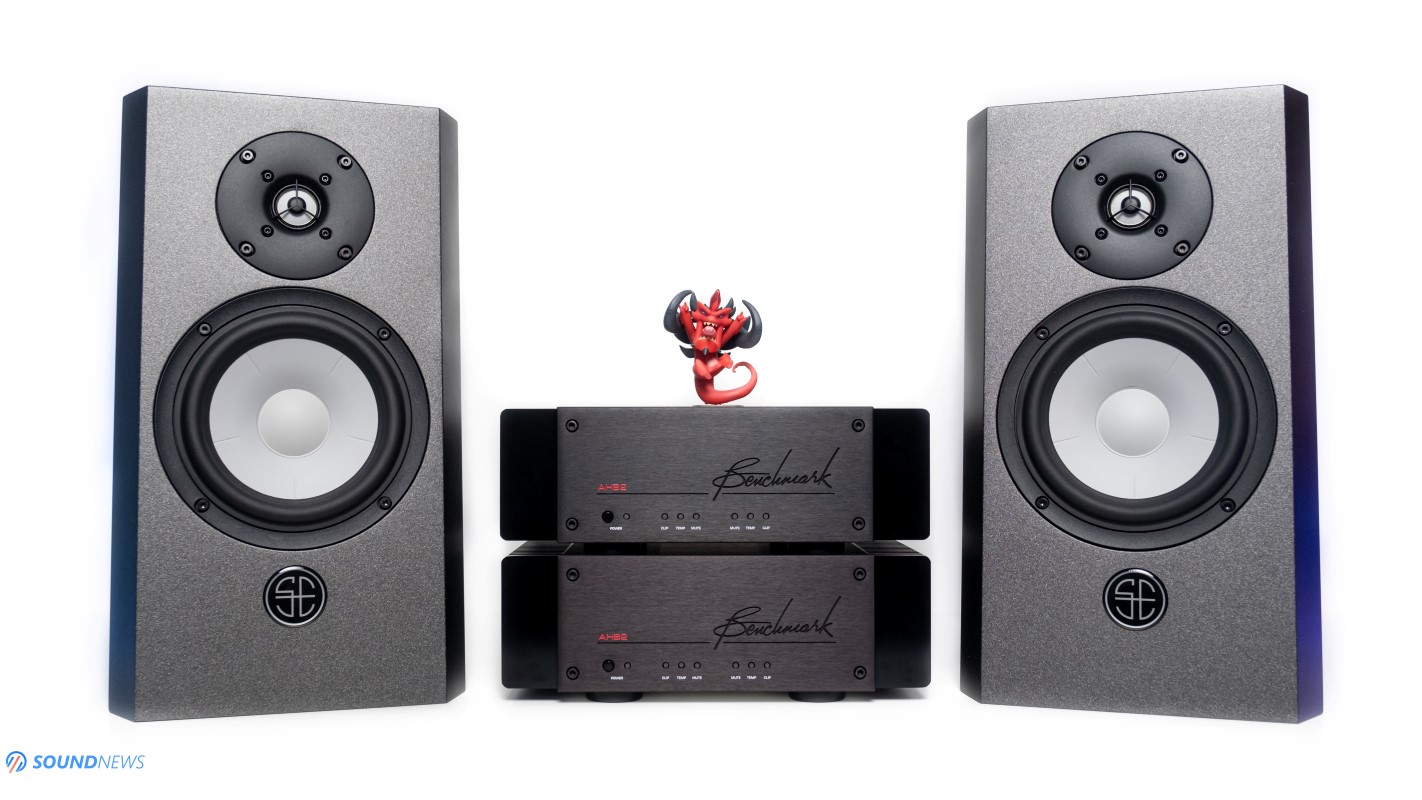
VI. Frequency Response
One of the biggest highlights with AHB2 is that everything sits at the exact same level, be it bass, midrange and treble, you’ll be getting the full frequency spectrum pushed into the light, without dropping or rising any particular region.
A. Bass
While on paper, Reference 3 can’t reach the lowest possible octaves as 20-25 Hz, the bass output still felt strong and punchy, while remaining tightly controlled. When it comes to bass, there’s only one unit that could challenge the AHB2 and that is Keces S300 that felt exactly as impactful. AHB2 provided a fast executed bass, decaying it instantly without lingering for longer periods of time. I’m comfortable saying that starting with the lowest octaves and finishing with upper bass, AHB2 was having a perfect blend of impact, control and sustain. The bass kick in the chest can’t be forgotten that easily, as there is slightly more energy in there and your loudspeakers will be thankful for that. Benchmark delivered not only quantity wise, as there was also texture, warmth, presence and a fast transients. It delivered a high-quality bass too, as you can feel it vibrating and slowly passing through the room. The end result was a linear type of bass that was snappy and highly engaging at all times. Mid-bass felt exactly the same and I’ve got all the quantity and quality that I could possibly desire. I was hooked to this kind of bass and the funny thing is that I started spotting bass-notes where I never believed I can find them. There were several times when I wanted a lower bass quantity, but I’ll solve that with proper acoustic treatment that will be coming this year.
B. Midrange
While I don’t find it smooth and full-bodied sounding in here, its bipolar output stage biased into Class-AB operation added some flow, effortlessness and naturalness into a linear sounding amplifier. Some amps are putting more meat on the bone; others are pushing the vocals forward. In contrast, AHB2 wasn’t doing this, as it’s a linear sounding amp top to bottom, without emphasizing anything, trying to be as honest as possible, while retaining the naturalness of your music. I wouldn’t describe it as warm or meaty sounding, as it’s more about getting out of the way, fully preserving the weight, the innards and the naturalness of the notes happening in this region. Midrange came only in right doses and I felt only small traces of naturalness and no matter how objective or subjective I was, nothing felt boosted or stolen from my music. Forget about thinness or coldness, as there is nothing of that in here. AHB2 tried to impress the most with its rightfulness and high precision. There is nothing of that mellow or slow character of entry to mid-level amps, as AHB2 is a nimble wild horse. It will keep up with the fastest tunes, always sending shivers through your spine. For almost a year now I went through my entire music collection and I couldn’t get enough of it, as it sounded just right from the get go.
C. Treble
Describing its treble output is a little complicated, as on one hand there is plenty of treble presence, detail, shimmering and as much information as you want…but there is no listening fatigue. I’m hearing the brass crashing and shimmering when cymbals are being hit, bells are ringing loud and clear, but all that happens without forcing me to lower the volume. Treble felt highly energetic, there was an abundance of micro-details even past top-octave, but all came without sacrificing anything. You can listen to your tunes at higher volumes, without experiencing ringing in your ears. You know what’s interesting? I’ve put them back in my headphone setup, I’ve added the HPA4 working as a pre and Rockna Wavelight was doing the digital to analog conversion and I drove the Hifiman Susvara with a huge grin on my face. You see, HPA4, AHB2 and Susvara are detail-oriented and transparent sounding units, those are my truth telling, noise sniffing, music making machines. I didn’t experience brightness with that setup, I just wanted to listen to more music and rediscover that organic sound on the Rockna Wavelight that was put on a plate, listening to plenty of rock and blues albums, as I wanted to playback my childhood memories. With some tunes it would highlight the bass notes and add a different meaning to them, with other tunes it would bring goose bumps all over my body due to an outstanding reproduction of the human voice and in others it would show the beauty of the cymbals and tambourines. AHB2 was always on top of its game, tightly controlling every musical note, being a gentle giant with smoother music and a ruthless beast with some other tunes and you know what? I love it for that.
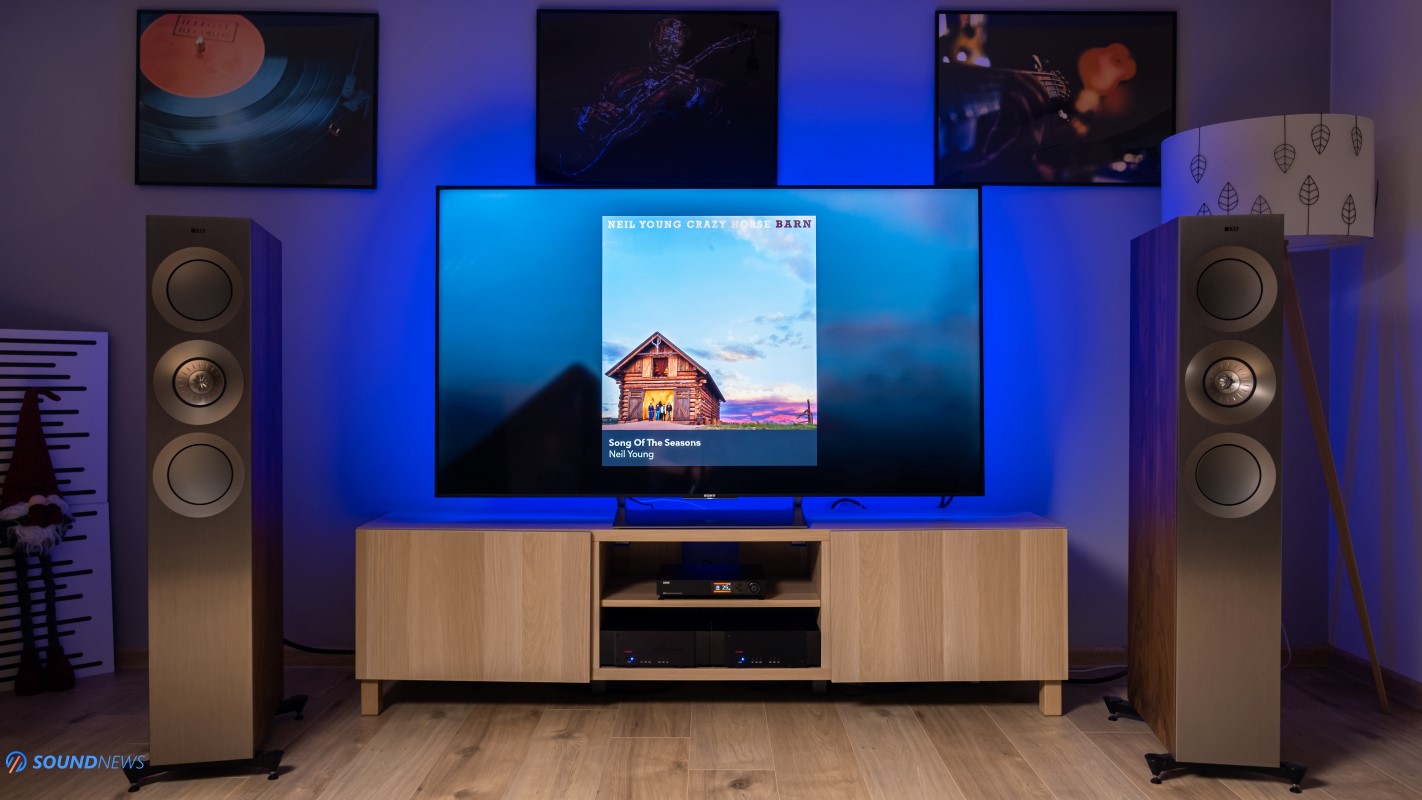
My Conclusion
The highest compliment I can give to AHB2 is that I purchased not one, but two units with my hard-earned money. These weren’t loaner units and this wasn’t a sponsored review and you can draw your own conclusions.
I know that AHB2 wouldn’t be for everybody, as it can’t beautify your music, it can’t add smoothness and liquidity into the mix as a tube or hybrid amp would do and it wouldn’t highlight or roll-off parts of the frequency response. For me, AHB2 was the definition of a wire-with-gain amplifier that never stood in the way of my music.
However, if you’re searching for an honest, ultra-revealing, noiseless, transparent, lightning-fast and hard punching amplifier that wouldn’t limit the air travel, while providing an excellent imaging and depth, then AHB2 is one of the most impressive amps that passed through our HQ.
€2999/$2999 is indeed a lot of money, but after playing with them for almost a year now, driving three pairs of loudspeakers and a set of inefficient headphones, I’m telling you that Benchmark is offering a lot more in return. You won’t get a cleaner sounding amp even at thrice its price; you wouldn’t find a lower distortion amp that could drive almost anything out there and you can quote me on that anytime. With the right source and loudspeakers, it will sound highly engaging, always making you move, smile and toe-tap. While it’s indeed a linear and straight as a line amplifier, it was still highly dynamic and engaging sounding, trying to exceed my highest expectations.
Considering its outstanding measurements, sound performance and bullet proof protection systems, I’m happy to award it our highest badge. This is the third power amplifier to receive our Gold Award and truthfully, it was fully deserved! Congratulations to the team and I’m looking forward to their next doings.

You can get the Benchmark AHB2 directly from their webstore for $2999, or you can contact your local Benchmark Media distributor for a listening session. In case you are getting a unit, leave a comment below and let me know how it performs in your stereo setup.
PROS:
- Industrial and minimalist looking, it’s built like a tank
- Lightweight and small enough to be used in tiny setups
- Bullet-proof protection systems will be saving your precious equipment from any harm
- Runs cool even under heavy loads
- Impressive selection of analog inputs and output
- Plenty of power under that tiny hood, but if you need more – you can always add another unit
- Extended frequency response at both ends of the spectrum
- Lacks any form of noise or distortion, extremely transparent sounding
- Clean and highly detailed at all times
- Fairly neutral sounding, without putting an accent on a particular range
- Slams and pounds like crazy, impressive transient response
- A technical sounding amplifier on all accounts
- It was nicely expanding or shrinking the stage depending on the music
- Accurate positioning of the notes around the listener, excellent depth and imaging
- An end-game power amplifier from multiple points of view
- Worth every penny
CONS:
- Can’t beautify your music or roll-off the upper treble
ASSOCIATED EQUIPMENT:
- DACs: Rockna Wavelight, Audiobyte HydraVox & HydraZap, Singxer SDA-6 PRO, SMSL VMV D2, DO200, Gold Note DS-10 Plus & PSU-10 Evo, Gustard X18
- DAPs: FiiO M17, M11 Plus, Hiby RS6
- Headphone Amps: Ferrum OOR + Hypsos, Burson Soloist GT, Flux Lab Acoustics Volot, Benchmark HPA4, Musician Andromeda, SMSL HO200, Gustard H16
- Preamps: Benchmark HPA4, Musician Monoceros
- Power Amps: Benchmark AHB2 (x2), KECES S300, Burson Timekeeper 3i
- Loudspeakers: KEF Reference 3, Sound of Eden Crescendo UNO, Natural Sound NS-17
- IEMs: FiiO FH9, FD7, FH7, FA7, Meze Rai Penta, Rai Solo, LittleDot Cu KIS, Hiby Crystal 6 & others
- Portable headphones: Sennheiser Momentum 2, Meze 99 Classics
- Full-sized headphones: Hifiman Susvara, HE1000SE, Arya Stealth, Sundara, Deva Pro, Audeze LCD-5, LCD-4, Erzetich Phobos 2021, Erzetich Mania, Kennerton Rognir, Magni, Gjallarhorn, Vali, M12S, Apos Caspian, Sendy Peacock, Aiva, Apollo & others
- Interconnects: QED Reference (x2), Topping TCX1 (x2)
- Speaker cables: Kimber PR8, Audioquest Type4
- Power Cables: Isotek EVO3 Premier (x3), iFi Audio SupaNova (x2)
- Balanced Isolation Power Conditioners: PLiXiR Elite BAC1500 (stereo setup), Elite BAC400 (headphone setup)
